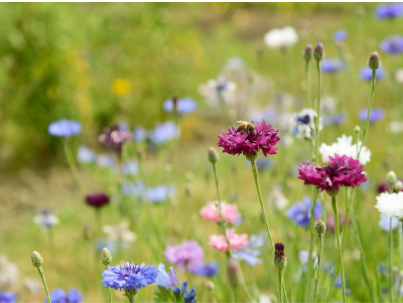Wildflower Turf Sowing Guide
How to get the best from Wildflower meadow turf planting
Planting Wildflowers is great for wild life, especially the birds and bees. They are not hard to grow but our guide here will help you get the best from our Wildflowers turf Scotland range.

Planting wildflowers and how to manage
- Select a weed-free site of low fertility. Fertilisers should not be used since broad-leaved and grass weeds together with cultivated grasses that are contained in standard mixtures can be highly competitive on fertile soils. This can adversely affect seed germination, establishment, and subsequent growth. However, increased grass cutting can help to counteract over-competitive growth.
- Control weeds before sowing. Annual weeds may be hoed, buried, or killed with a contact herbicide. Perennial weeds should be eradicated by a translocated glyphosate-based herbicide.
- Cultivate the ground to provide a fine, weed-free seedbed. Firm if necessary.
- Sow mixtures either from early March to May or from early August to mid-September. This will ensure autumn establishment of most species.
- Take care to sow evenly at the recommended rate. Thoroughly mixing one part seed with four parts dry sand makes for easy distribution.
- Rake in the seed lightly with a spring-tined rake and firm the soil by treading or, preferably, rolling. This ensures that the seed comes into contact with moisture in the soil.
- Water with a fine spray. This will avoid disturbing the surface of the soil. Keep the area well-watered and free from any unwanted plants.
- Cut the sward every six to eight weeks during the first year after sowing and remove the cuttings. This will prevent the grass from overgrowing the slower-growing wildflowers.
- In the following years cut in early spring before growth starts and in October after all the wildflower seeds have been shed.
- Remove the Cuttings.
Check out our selection of Wildflower Seed to Click and Collect here or to have delivered here



